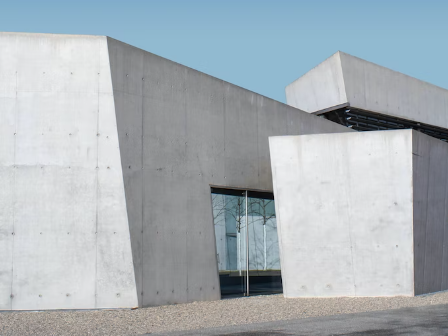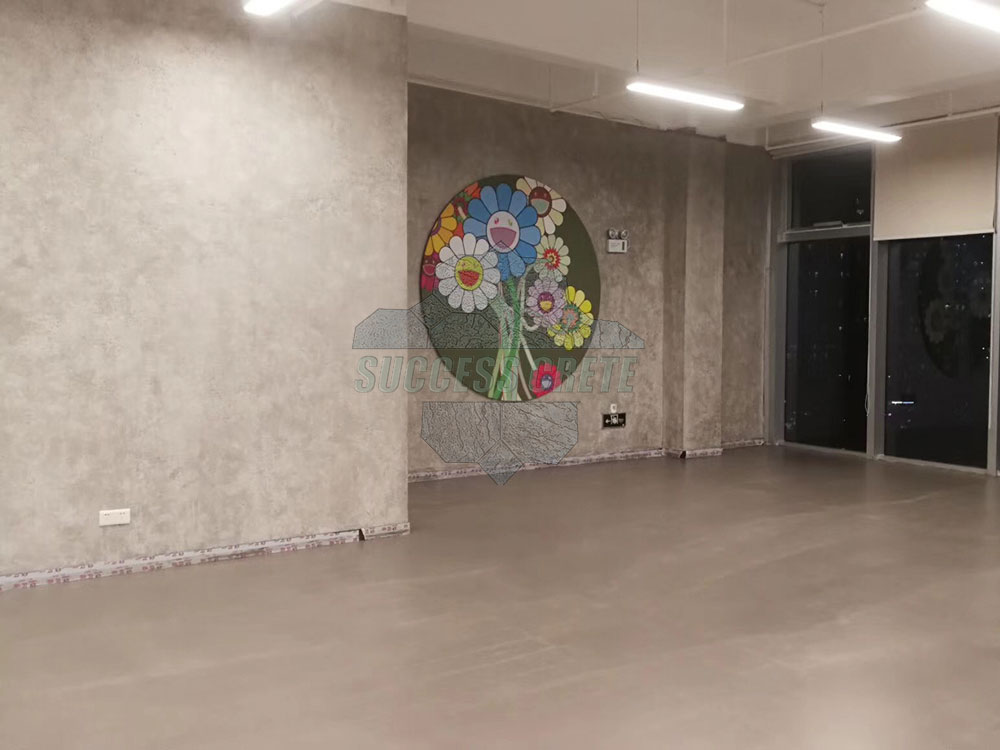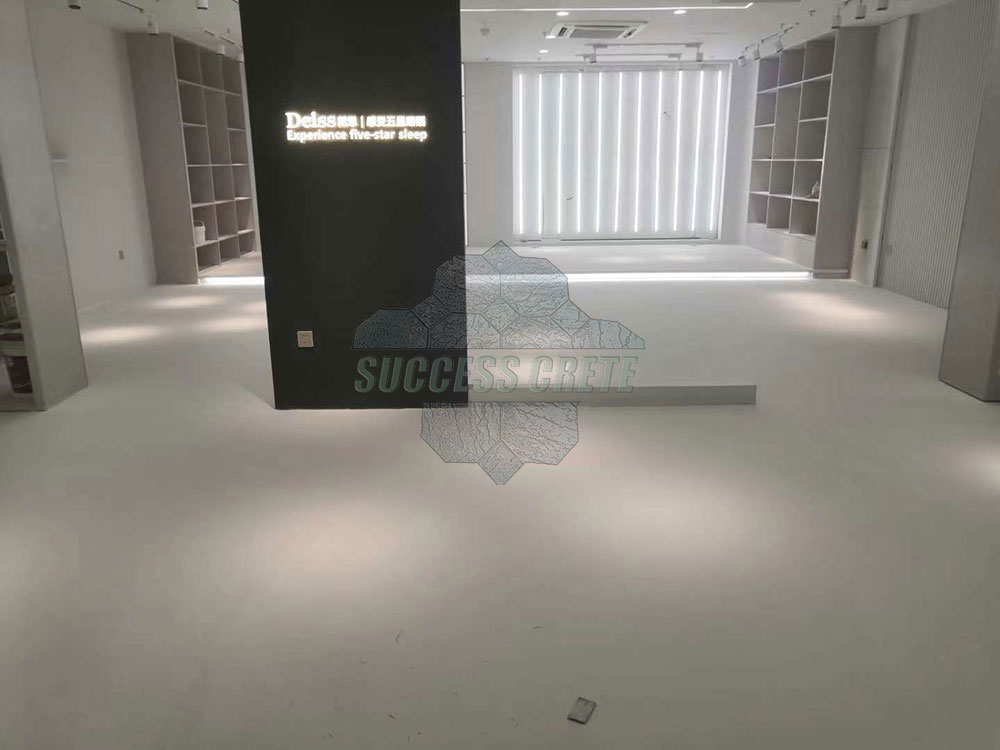Introduction
Are you considering using self leveling concrete for your next project? If so, that would be great!
This article covers everything you need to know about this versatile material, from its benefits to the installation process.

So whether you’re a business owner looking to improve your property or a DIY enthusiast eager to try something new, keep reading for all the info you need on self leveling concrete.
1. Introduction of self-leveling concrete
Self-leveling concrete is a construction material that is self-leveling and self-compacting. It can be used on floors, ceilings, and walls. It is made with Portland cement, aggregate, water, and chemicals.
The self-leveling concrete was invented in the 1950s by a Swedish company. self-leveling concrete is mixed at a central mixing plant and then transported to the Jobsite in special trucks.

self-leveling concrete is placed using a pump. self-leveling concrete levels itself and does not require troweling.
It is used for flooring, countertops, and architectural precast. self-leveling concrete has been used in Europe since the 1960s and in the United States since the 1980s.
Self-leveling concrete is more expensive than traditional concrete but it saves time and labor costs. self-leveling concrete is an important innovation in the construction industry.
It is a popular flooring material often used in preparation for tile or vinyl floors.

It’s an increasingly common choice as modern demands require smoother surfaces and flatness that is not always achievable with traditional construction methods alone.
Self-leveling concrete has become one of the most sought-after choices because it provides this consistency needed by those who want their new pavement ready to go at all times!
The best way to level your floor is with self-leveling cement.
It’s similar in function and texture to regular concrete,but it flows much easier,
so you can pour more of it on the self leveling concrete kitchen floor without worrying about getting any height differences between sections or wrinkles from excess moisture coming up under margins where there should be no wetness at all!
You just need some patience while watching how quickly things turn into the pavement beneath our feet–and then enjoy having an even surface waiting for us when we’re finished making changes around here.

The product will usually become smooth and flat within 1-2 hours.
This is because the adhesive has a certain amount of time before it needs to be applied in order for you to want your floors to look their best!
After about 6 hours, depending on what flooring material was installed over top; these apply immediately once removed from the package.
If you’re looking for a long-lasting, durable solution to your flooring needs then look no further than our high-quality DIY self-leveling cement.
This product can withstand even the most demanding of uses and environments while still providing years’ worth of durability in just one application!
If however after 6 months or so it has started cracking due to its poor handling by yourself I recommend getting professional help who will know exactly what steps need to be taken next before things turn worse.
2. The difference between self-leveling concrete and ordinary concrete
If you’re looking for a long-lasting, durable solution to your flooring needs then look no further than our high-quality DIY self leveling cement.
This product can withstand even the most demanding of uses and environments while still providing years’ worth of durability in just one application!
When it comes to leveling concrete surfaces, there are two main types of material: self-leveling concrete and ordinary concrete.
Ordinary concrete is just that—ordinary.
It doesn’t have any special features or qualities that make it better suited for leveling purposes.
Self-leveling concrete, on the other hand, is specifically designed for this purpose.
It has a thicker consistency than ordinary concrete, which makes it capable of leveling uneven surfaces on its own.
If you’re considering using concrete to level a surface in your business, it’s important to understand the difference between these two types of material.
Most people are familiar with plain concrete, which is commonly used for driveways, sidewalks, and patios.
Conventional concrete requires large amounts of water to achieve the fluidity needed for effective placement.

Self-leveling concrete eliminates the need for water while maintaining the fluidity of the concrete. Its consistency has been described as similar to pancake batter, while traditional concrete is thicker and coarser.
However, self-leveling concrete is a newer type of concrete that has many advantages over regular concrete.
What makes self-leveling concrete different from ordinary concrete is the large number of polymers used to make it.
Polymers are unique gel-like molecules that bind substances together. Polymers are used in everything from leather to wood, from computers to paint and metal coverings.
It is a thinner mixture than ordinary concrete, so it can be easily poured into place without the need for forms or other support structures.
Self-leveling cement also hardens quickly, so it can be ready for use in as little as 24 hours.
In addition, self-leveling concrete provides a smooth, level surface that is ideal for applications that require high levels of flatness.
Self-leveling concrete is also more resistant to cracking and crumbling than plain concrete. As a result, self-leveling concrete is an ideal choice for many homeowners and businesses.
However, self-leveling concrete does have some drawbacks.
It is more expensive than plain concrete, and it can be difficult to achieve a consistent color or finish.
In addition, if not applied properly, self-leveling concrete may be prone to cracking.
For these reasons, it is important to consult with a professional before choosing self-leveling concrete for your project.
3. Why use self-leveling concrete?
Self-leveling concrete is a great option when pitting, cracking, and splitting develop into problems that cannot be solved by using traditional repair compounds.

The biggest reasons are resurfacing an entire floor or making repairs on slabs in wet areas where there might otherwise not have been any hope for fixing the damage without installing new foundation material below grade level – which can cost thousands of dollars!
Localized repair of flat or uneven spots.
Mudjacking and polyurethane injection are sometimes the only solutions for uneven slabs.
However, many flat or uneven slabs can be restored to level by grinding the slab and using self-leveling concrete.
The original industrial look of natural concrete can be a great way to create an interesting and modern design for any space.
The coloring additives in self-leveling concrete produce finishes that go with many different styles, from traditional looks all the way up through something more creative like secondary features such as backsplashes or accent tiles!
They are usually made of Portland cement, plasticizer, and other ingredients.
They have strong durability but are easy to move around because they’re fluid-friendly too!
If you need something that won’t stick much then this material should work well for your needs;
just make sure not to dip below 1/4″ thick or else there will be little cracks all over the place when dry (and even less if using thicker versions).
The special purpose concrete is ideally suited for radiation insulation because it easily flows around pipes.
It must be applied with a lime patty so as to achieve proper leveling of the surface and not leave any bumps or ridges where water will pool on top due to its heavy weight.
Self-leveling concrete is an especially cost-effective solution for floors.
This can be true in projects that require complete removal of the floor, subfloor, or even foundations and it’s ideal if you have room to save your old one because all we need then are about one-quarter thick layers – which means no more expensive construction!

In short, the use of self-leveling concrete has many advantages:
- Self-leveling requires no need to add water, which means less mess, and you are less likely to over-pour the concrete.
- It not only looks great but it also provides a smooth and strong surface for your feet. It’s perfect as an underlayment or on its own!
- It can be used not only for leveling concrete but also for laying on any non-flexible surface such as tile, LVP, wood, or plywood.
- It is easy to use, so even amateurs can use the product to successfully level concrete floors.
- With its strong, durable qualities this concrete is perfect for reinforced structures.
- It is less likely to cause allergic reactions. This is in contrast to regular concrete, which can cause
- workers to become allergic, which can lead to occupational asthma.
- It is also more resistant to mold growth in wet conditions than plain concrete.
- It dries extremely quickly, which means you have less time to wait for the next step.
4. When not to use self-leveling concrete
Here are some self leveling concrete tips about when not to use self-leveling concrete:
While there are some indoor applications that may make sense (e.g., covered but exposed garage floors), most 100% outdoor surfaces aren’t suitable for self-leveling concrete.
Secondly, Self-leveling concrete is not for everyone, any vertical surface is not suitable for it. The reason is that polymer blended slurry can’t cure well on an uneven or unlevel surface.
Finally, self-leveling concrete should not be used in areas where harsh chemicals are present or where heavy machinery is installed or operated.
This is because – even when it looks beautiful and smooth – self-leveling concrete is not as flexible or structurally sound as traditional concrete.
Have More Questions? Send them to us!
Successcrete knows that any project that requires the use of concrete requires a professional evaluation.
To help you, we offer an expert opinion on your unique project to determine if the use of our special mixture is the best and most suitable for this particular job.
To get in touch with our team of experts, contact us today.




